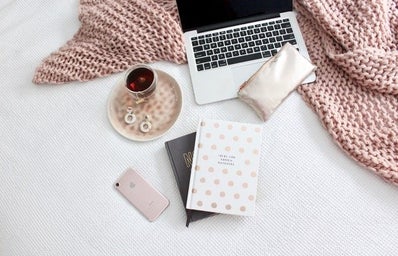There are many hobbies that I picked up during the first nationwide lockdown in March of 2020, but only one thing has stuck, crochet. I had some prior experience with crochet before jumping off into the deep end in 2020, but it was mainly simple stitches and trying my best to recreate Harry Styles’s iconic cardigan with no prior experience. As many did, I failed after a few weeks of trying my best to make the relatively intricate and complicated wearable. After relishing in the failure of my first crochet project, I decided to go back to square one, literally. I made multiple swatches using different types of yarn, stitches, and hook sizes and it is fair to say, I was hooked (get it?). Over my almost three years of crocheting, and going into my second year of making it a business, I have picked up many tips and tricks I wish I would have known when I first started, so, therefore, here is what you NEED to know when you first start crocheting.
Don’t start with fluffy or blanket yarn
Though they are my preferred yarns now, fluffy yarn and blanket yarn are a lot of crocheters’ worst nightmares. Their soft appearance makes them aesthetically pleasing, and more likely to catch the eye of a buyer if you’re selling, but their thickness and fluffiness come with a price, literally and figuratively. When you crochet with these types of yarns, stitches are almost impossible to see without a trained eye. If you can’t tell how many stitches you are working with, utilizing patterns you are trying to recreate will not work out as planned. To start with, I would recommend working with a softer type of acrylic yarn, or cotton yarn. These types of yarns are much cheaper and can make items that are just as cute and lovable as blanket yarn. If you are looking to practice counting stitches and stitch definition, I would start with a light-colored cotton yarn, and utilize YouTube to begin making some basic stitches and squares that can be taken apart and reworked into different projects once you have mastered the basics.
Memorize basic crochet terminology and stitches
Speaking of mastering the basics, one of the best things you can do to set yourself up for future success when trying to make crochet items from patterns is to memorize the abbreviations and terms commonly used. That way, when you see “dc 3, sc 5, dc inc in next stitch”, your brain doesn’t explode. Here are some commonly used crochet abbreviations and what they mean, along with some video links explaining how to do the stitch:
SC: single crochet, one of the most basic and common stitches, used frequently for amigurumi.
DC: double crochet, another common stitch for blankets and wearables.
HDC: half double crochet, one of my favorites.
DEC: decrease, this technique is used to decrease the number of stitches usually from two to one.
spend 20-30 minutes a day crocheting
If you have the time, practice makes perfect. You won’t be a master crocheter by week one or maybe even month one. It takes time to figure out what works well for you and what doesn’t. Plus, once you get better and faster at crocheting, you can watch shows, listen to music, and do other activities while crocheting to make the time go by quicker!
blankets are not a bad starting project
A lot of people may disagree with me, but in my opinion, making something like a blanket as your first full-fledged project is not a bad idea. You get acquainted with stitches super fast because you do them so many times, you get used to counting your stitches and get a feel for how projects work up. It’s also not something that you can do in a day, so it forces you to spend some time on it if you want to finish. You do NOT have to use blanket yarn to make a blanket! I made my first blanket with this yarn, and it’s super light and soft!
stitch markers are your friend
Possibly the best crochet invention is a tiny tool called a stitch marker. These plastic safety pins, if you will, help keep your stitch count consistent, and save you time in the long run. If you need to crochet around a project, just pop a stitch marker in on your first stitch of the round, and you don’t have to worry about counting! Just crochet to the stitch marker and you will know you have reached the end.
Crochet can be intimidating for those who are just starting, but it is a hobby worth pursuing. This list obviously isn’t exhaustive, but they are what I wish I knew before learning how to crochet. Crochet has changed my life. It was a hobby turned passion turned business venture, and I am so lucky to have found what I love to do.


